 |
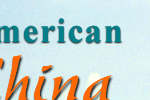 |
 |
 |
 |
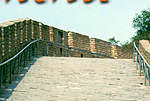 |
 |
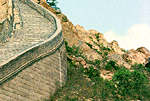 |
 |
 |
 |
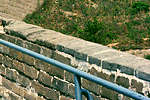 |
 |
 |
 |
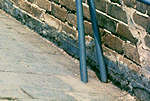 |
|
August 14, 2001 FREE
MARKETS OR SUPERMARKETS?
|
|
After taking a stroll through a muddy, crowded Chinese market with discarded corncobs, piles of peas, globs of bloody slime and scurrying rats – the answer seems clear. The sweaty pork being inspected by old women and flies could never be as tasty or healthy as the shrink-wrapped supermarket version. But for anyone who has been inside a cannery or a slaughterhouse in the West, the answer becomes difficult and increasingly cultural in nature. The Twin Cities, Minnesota have the largest Hmong (a minority from the hills of Vietnam) population in the US, along with the highest Tibetan population, highest Chinese student population (University of Minnesota) and a healthy dose of Koreans, Thais and other Asians. They used to take trips into the Minnesota countryside to procure "fresh, sanitary" meat and produce, and are now among the people lobbying for a new, expanded Farmer's Market in St. Paul. The demand is coming not only from the immigrants, used to choosing wiggling pigs and squawking chickens for dinner, but also from native Minnesotans who hunger for genetically pure/organically-grown food. Conversely, the French supermarket chain Carrefour is enjoying full aisles with its "supermarket with Chinese characteristics" scheme. The Chongqing outlet has slabs of boneless chicken breasts shining under lamplight, pork chops, beef ribs and tenderloin steaks kept safe from flies, snot, spittle and other pollutants. Affluent Chinese (a minority, albeit a growing one) look skeptical as the employees assure the broccoli's freshness, but the pristine presentation is too much for even an old market hand to resist, and an old woman buys. Not-so-affluent foreigners arrive for cheese, butter, Pringles, peanut butter, and the "sanitary environs" that a supermarket provides. In the back of every Carrefour, however, hang the freshly roasted ducks, slaughtered pigs, swimming fish and naked chickens, and this spot is invariably the busiest. The question posed by free markets and supermarkets to the consumer has no objective resolution. Free marketers will swear by the gurgle of a dying duck and supermarket fanatics will always prefer the organized sterility of the tranquil supermarket. The real questions now being posed to food-lovers are: Iowa corn or Guizhou corn? Hunan Apples or Washington apples? Guangxi cotton or Georgia cotton? 800 MILLION FARMERS"Just how far China has come is one of the great accomplishments in the realm of agriculture. The vast majority of China's population still is working the land and their incomes lag far behind their urban neighbors. Farmers have suffered from a shortage of water and energy. But in the less than a decade since the government lifted its heavy hand from farmers, China has become the world's leading producer of fruits and vegetables. China grows seven times the amount of vegetables and twice as much fruit as the U.S." ~ Los Angeles Times, August 8, 2001 Every last foot of available space in China is covered with a crop – or two. Remote valleys, hillsides leading down to the highway, small plots next to garbage dumps, apartments, parking lots, basketball courts – all are farmed. China's farming methods have not changed much in a millennia or two. Callused, spidery, old Chinese men and their thick, rough wives are out in the fields every day, knee deep in cow-dung, checking on the rice yield that was once handed over to the government at fire-sale prices. The government – as any man, woman or child alive in China during the famine of 1958-1960 can tell you – was not adept at distribution. The agricultural reforms started when Sichuan Province allowed farmers to sell part of their yield on the free market. The success of this program led to its duplication, which, in turn, caused an explosion in China's agricultural productivity. Japan was the first country to feel the growing might of China's agricultural industry, when shiitake mushrooms and spring onions from China threatened to throw Japanese farmers out on the street. The trade war that ensued after Japan threw up tariff barriers involved TVs, cell phones and automobiles. The US government and media have focused on the projected $1.5 billion in exports to China that American farmers will enjoy after China enters the WTO, but they have neglected to mention the immensity of Chinese agriculture. China's apple production increased from 4 million tons in 1990 to 22.9 million tons in 2000 and pears increased from 2.5 million tons to 8.6 million tons over the same period. China is busy pushing California out of the Japanese broccoli market, while fearful American farmers clamor for an increase in federal farm payments. US agriculture depends on Asian markets to swallow up 38% of their annual exports and this percentage will fall as China's farmers keep taking over market after market. American farmers have good reasons to worry. Chinese produce is less expensive than American produce and its quality is as good if not better. In response to farmers' worries, the US has refused to remove antidumping and product-specific safeguards that World Bank economists Will Martin and Pieter Bottelier have deemed "protectionist" and not in keeping with WTO regulations. American farmers claim that Chinese subsidies and low prices are unfair competition, and the US government has responded by imposing ridiculously high tariffs. But the Chinese government provides around 2 percent of production in subsidies, which is far below that of either the EU or the US. According to an August 12 article, "Federal Aid Sustains Iowa Farms," by George Anthan and John McCormick in the Des Moines Register, if federal payments were discontinued, many of Iowa's farmers and merchants would fail. And we may never really know how much the US government subsidizes agriculture, since the US has refused to report its agricultural subsidies to the WTO since 1997. (It's interesting to note that the WTO agreement reached by the US and China puts agricultural subsidies at around 8% – below the 10% level for developing countries and above the 5% cap for developed countries.) The US government recognizes China's capitalist might, and has used the WTO trade negotiations to impose strict rules on China's industry, while keeping the right to cry "dump" whenever it pleases. Trade between the East and West seems to follow this familiar pattern, whenever the West has the military power to enforce it: open the doors to the East and keep closed the doors to the West. Such practices crushed the Indian textile and steel industries, as Noam Chomsky has pointed out, and forced Japan to bomb Pearl Harbor, as Justin Raimondo has shown, citing the research of Robert Stinnett and others. The US is trying to follow the same strategy in China: opening China's market as much as possible, while keeping Chinese exports on a tight leash. An agricultural trade war between the US and China seems very plausible – with both sides claiming unfair barriers and unfair market-distorting subsidies. What is scary is the US domination of the WTO "consensus process," touted by the developed economies as "the only way the WTO can work." A trade war in which the US flouts WTO rules while imposing them mercilessly on China could heat up very quickly. Imagine the chaos if China makes good on its promise to be the champion of underdeveloped economies – creating a rival bloc to the one currently in charge of the WTO (US, EU, Japan, Canada). |
Text-only printable version of this article Sascha Matuszak
is a teacher living and working in China. His articles have appeared
in the South China Morning Post, the Minnesota Daily,
and elsewhere. His exclusive Antiwar.com column appears Tuesdays. Archived columns Sailing
Towards World Significance China's
Youth Revolution |
IT COMES DOWN TO QUALITY"Damn, this peach is good," slobbered an American traveler recently in Kunming, Yunnan Province. "It's the best peach I've ever had." The peach was huge and resplendent on the outside, with shades of white, pink and soft yellow inviting a big bite. Inside, crunchy-juicy peach-love made us all murmur – until we reached the blood-red center, which made us all gasp. Peaches cost roughly 30 cents here in . Unlike Dole, the scourge of Central America, Chinese farmers are required by the Law of the Old Market Woman to bring only fresh, ripe produce to the market. No hard green bananas, no sour grapes, no hard baseball-peaches like the ones found in the supermarkets – like the ones my mom has to leave out for a day or two before we can eat them. The pipe-puffing peasant is to blame for all of this. The old methods of farming put more emphasis on quality over quantity and hard work over technology. The organic foods so popular these days in the Twin Cities, all over California and in the lush Northwest, are simply the products of old-style farming. China's large peasant population and low number of industrialized farms provide a perfect foundation for organic crops – not only for the Old Market Woman but also for the Young College Student of the West. Who would you trust as the ultimate judge of a banana's quality? Gramma Liu or a Dole corporation executive? CHOOSING GMChina has a land problem. Increased urbanization, industrialization and environmental degradation have destroyed cropland and given rise to a polluted food supply. (Read "Culture of Pollution" for a brief description of the Chinese countryside.) The Communist Party has become very serious about this problem and has actively promoted non-chemical fertilizers, genetically modified foods (with the help of Monsanto) and labor-intensive, organic produce. According to a June 28 article for Reuters, "China to Set Pace in Transgenic Cotton Planting," by Lee Chen Yee, the acreage of transgenic insect-resistant cotton in China rocketed to about one million hectares in 2000, or 28% of the country's total cotton area, from less than 100,000 hectares in 1998, or 2.2% of the total area. This number is supposed to rise another 14.9% this year. Monsanto's Bt cotton covers about 240,000 hectares in China. GM crops are very important to China's agriculture. Almost a third of China's produce failed to reach the market in previous years due to poor transportation, handling and storage facilities, and, above all, due to pests. China's shrinking cropland and growing population demand increased efficiency, and GM seems to be the answer that the government has chosen for many of its crops, including rice and corn. A "super rice" is projected to produce roughly 900kg per mu (0.6 hectare) by 2008 – current production of first generation super rice is at 450kg per mu. China is already the world's fourth-largest grower of GM crops. The US has been active abroad – especially in Thailand, India and Sri Lanka – promoting GM crops and threatening WTO retaliation for any opposition, including the labeling of GM products. Monsanto has the blessing of the government, as can be seen in several court cases won by Monsanto against small farmers. In one case, GM seeds blew over into a farmer's field and Monsanto sued the farmer, claiming a violation of intellectual property rights. China has a knack for learning from others' mistakes, and has patented both its "super rice" and a version of Bt-Cotton called "Guokang." After hearing from experts, such as Vaclav Smil, that China's mass industrialization, coupled with its environmental crisis, could lead to a need for mass importation of food or even famine, China's agricultural revolution surprised many in the West. It's no longer a surprise, but a threat to American farmers, a boon for American consumers and a possible future flashpoint for the US-China relationship. Please Support Antiwar.comSend contributions to Antiwar.com or
Contribute Via our Secure Server |
|
